Get PeakVisor App
Sign In
Search by GPS coordinates
- Latitude
- ° ' ''
- Longitude
- ° ' ''
- Units of Length

Yes
Cancel
Share ×

Scan the QR code and open PeakVisor on your phone
❤ Wishlist ×
Choose
Delete
Mount Buffalo National Park is an alpine protected area located in the northeast of Victoria in Australia. The 31,000 hectare (76,600 acre) national park is located approximately 345 kilometers (214 mi) away from Melbourne, the state capital. The park is dominated by the Mount Buffalo plateau, with its highest point being The Horn at 1,723 m / 5,653 ft.
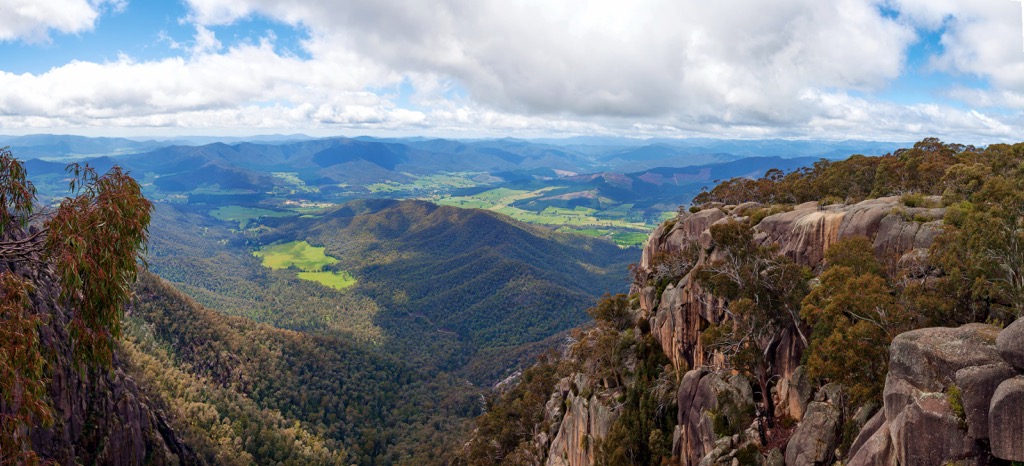
Mount Buffalo National Park covers an area of around 31,000 hectares (76,600 acres) in the northeast of Victoria. It forms part of the Australian Alps, which is the highest mountain range in Australia stretching across Victoria and New South Wales. This range is also part of the much larger Great Dividing Range, running almost the full length of Australia’s east coast.
The park is characterized by Mount Buffalo, a high mountain plateau rising up to 1,723 m / 5,653 ft at its highest point known as The Horn. Across the plateau, the landscape is dominated by sheer cliffs, granite tors, dramatic waterfalls, snowgum plains, and rocky outcrops. There are 27 named peaks within the park boundary, most of which are scattered across the plateau.
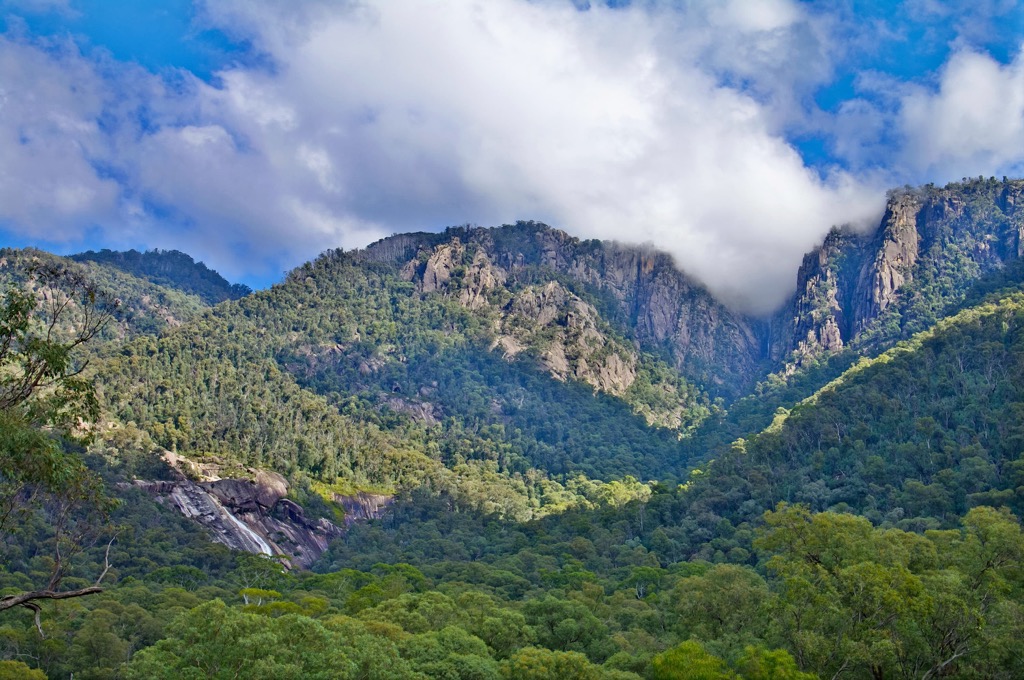
Standing distinctly separate from the nearby Alpine National Park in Victoria, Mount Buffalo National Park is one of the most accessible parts of the alpine region in Victoria. The park is surrounded by pine plantations and regional towns, in what is often referred to as Victoria’s High Country.
Mount Buffalo National Park is a large granite massif that has formed slowly over hundreds of millions of years. Molten rock from the earth’s core tried to force its way through the soft sedimentary crust. Instead, it cooled slowly and transformed into huge masses of granite that sat below the surface. Wind and rain has since eroded the top layers revealing the incredible rocky landscape that you see today.
The boulder fields and cliff faces that are evident on the plateau have been created as the crystal structure of granite slowly peels away its layers over time. Granite rock weathers much more slowly than many other types of rock and these rounded surfaces tend to provide great stability, making the plateau an ancient landscape that is quite unique to the alpine region in Victoria.
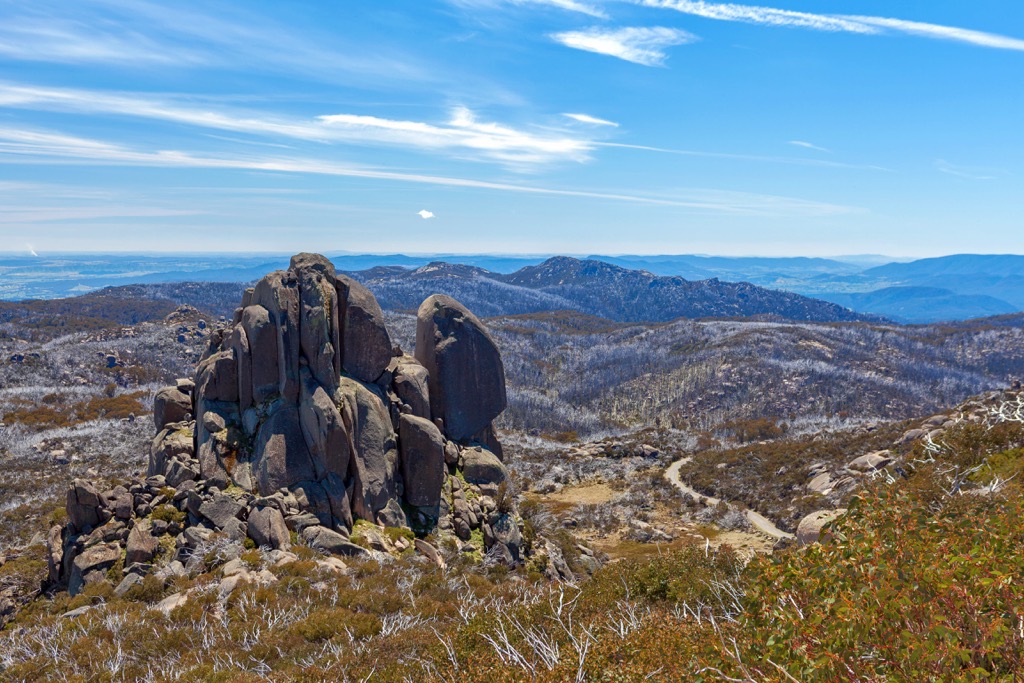
Mount Buffalo is home to plenty of Australian wildlife and over 550 species of native plants, including plants found nowhere else on earth. The forests of the plateau are home to kangaroos, wombats, wallabies, possums, and sugar gliders. While in the skies, currawongs, eagles, lyrebirds, and crimson rosellas, are commonly spotted.
In terms of flora, the plateau is dominated by subalpine and alpine vegetation. The flora tends to change as the elevation rises up the plateau. The lower slopes have communities of mixed gum and peppermint, including the bogong gum. While, alpine ash and snow gums are more common above 1,100 meters (3,600 ft). Grasslands and bogs are also found where valleys dip below the treeline.
Mount Buffalo National Park is also home to three unique plants: Buffalo sallee, Buffalo sallow wattle and fern-leaf heath myrtle. These are endemic to the plateau and mostly found on the higher granite outcrops.
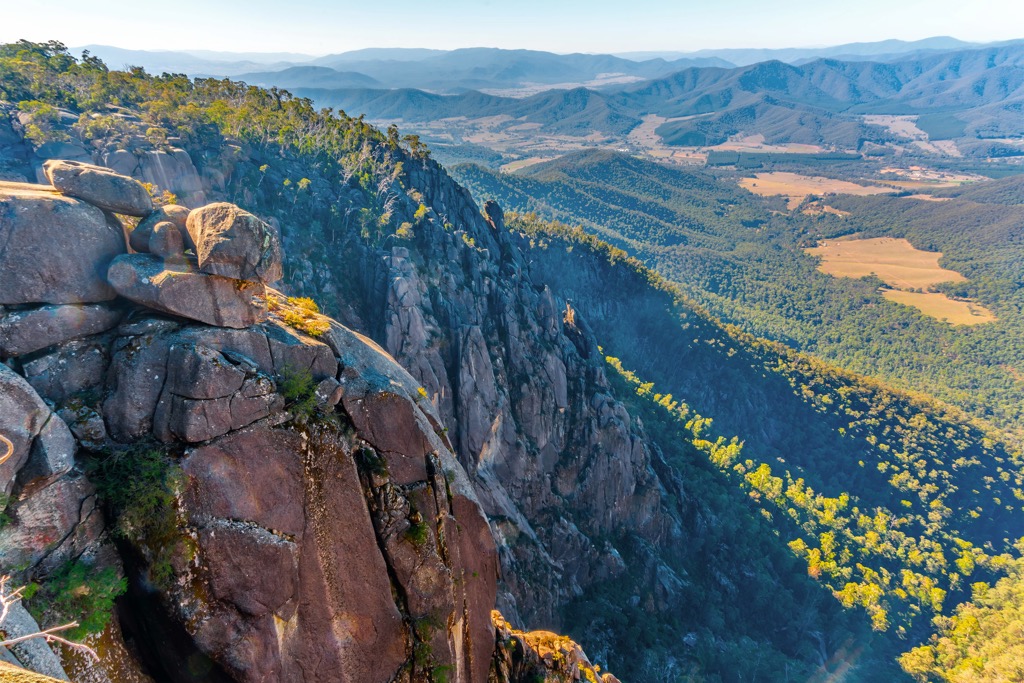
The Taungurung People are the Traditional Owners of the land including the Mount Buffalo National Park. They had occupied the area for thousands of years and would climb up to the plateau in summer to feast on the protein-rich bogong moths which shelter in the rock crevices high on the rocky outcrops. It is also recognized that they met and held ceremonies in various locations on the plateau.
Explorers Hume and Hovell were the first Europeans to see and name the mountain in 1824. It was named Mount Buffalo because of its unique profile resembling a reclining buffalo.
In 1854, James and John Manfield climbed the long spur from the Buckland Valley, being the first Europeans to explore the plateau extensively. Not long after, seasonal mustering of cattle driven up the southern slopes of Mount Buffalo began, due to the abundance of open alpine plains found in the area.
Unlike other parts of the alpine region, tourism began rather early in the 1880s on Mount Buffalo. An area around what is now called the Gorge was reserved as a national park in 1898, making it the oldest national park in Victoria.
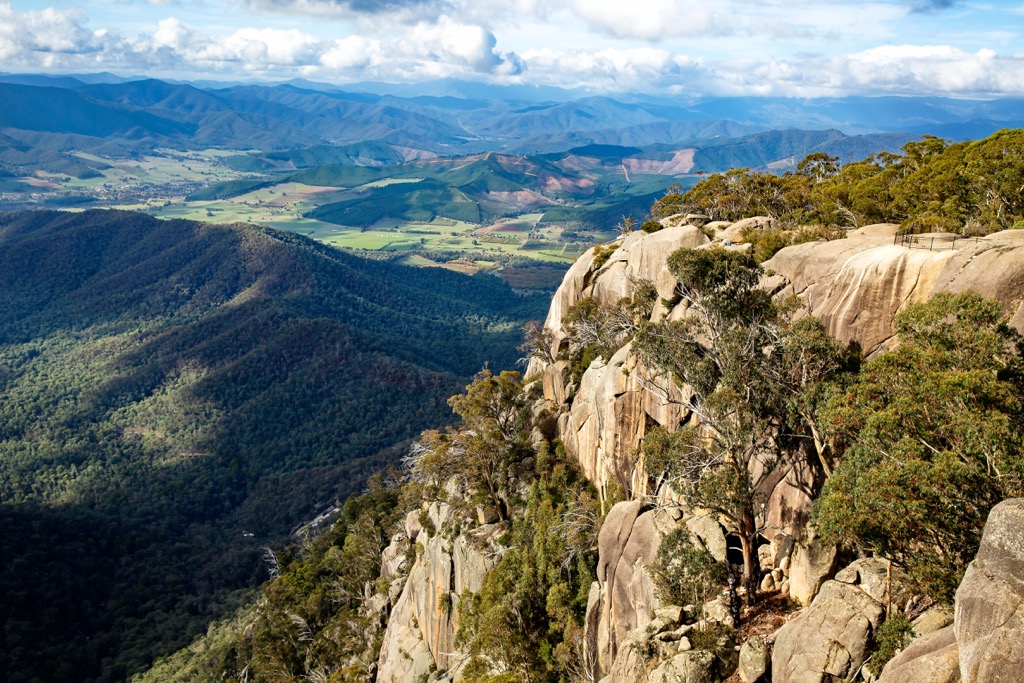
The Mount Buffalo Chalet was then built in 1910, two years after the first road to the plateau was constructed. Man-made Lake Catani was established in the same year to boast outdoor activities for visitors. The park quickly became a popular holiday destination for many Victorians in every season, with hiking trails established for summer and ice skating on Lake Catani and tobogganing popular in winter.
The park boundary was slowly widened to include the entire plateau and its surrounding slopes, making it one of the first alpine areas to be protected from cattle grazing and mining.
In 2008, the park was added to the Australian National Heritage List as one of the areas constituting the Australian Alps National Parks and Reserves.
Mount Buffalo National Park has for over a hundred years been one of Victoria’s best hiking destinations. There are many trails to explore, from short strolls to challenging day hikes across the plateau. No matter what kind of walk you’re looking for, there’s an option for everyone in the park.
Here are some of the best hikes in Mount Buffalo National Park to check out on your next visit.
The Horn (1,723 m / 5,653 ft) is the highest point of the Mount Buffalo plateau. To reach the exposed rocky peak, there is a short 500 m (0.3 mi) climb over rocks from the carpark at The Horn Picnic Area. The picnic area is located at the very end of Mount Buffalo Road.
Once you reach the top of The Horn Lookout, you’ll be rewarded with one of the most impressive panoramic views in Victoria. The view stretches across the plateau to distant peaks of the Alpine National Park and Australian Alps.
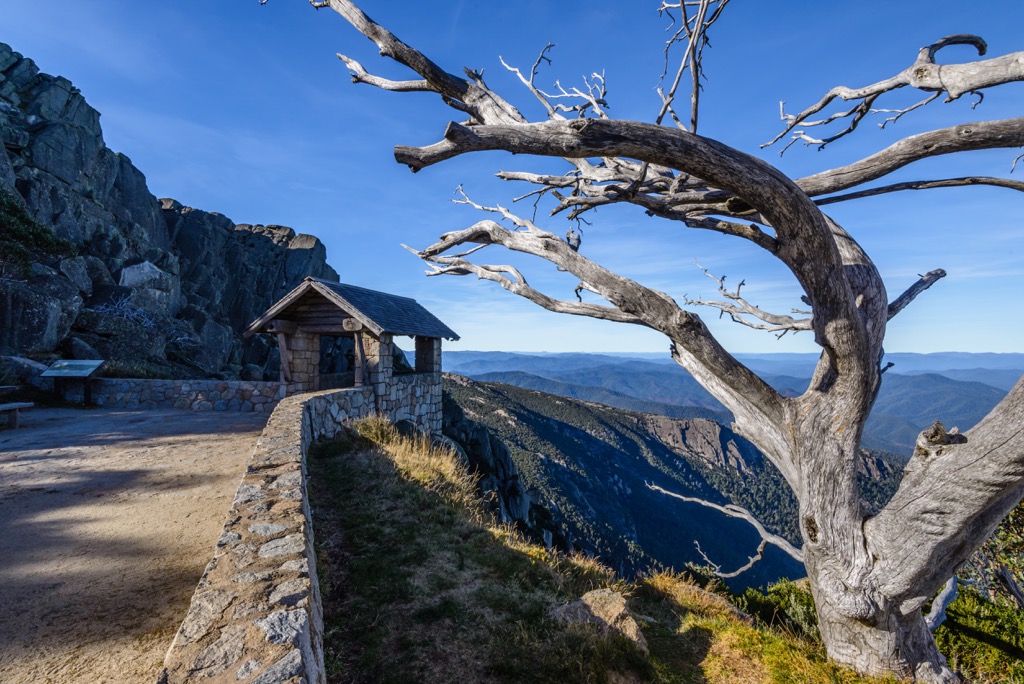
This is one of the most popular day hikes in Mount Buffalo National Park due to its proximity to Lake Catani Campground. The hike to Mount Dunn (1,512 m / 4,961 ft) follows the Long Plain Track and is around 7 km (4.3 mi) return.
The trail crosses some pretty alpine plains before climbing to the top of the rocky outcrop. The last part requires a climb on metal ladders that have been fixed into the granite rock. However, the view from the top is one of the best in the park across the central plateau.
For a gentle introduction to Mount Buffalo National Park, the Gorge Heritage Walk is a great family-friendly option. The walk is an easy 2.5 km (1.6 mi) loop on a gravel path from the Gorge Visitor Area.
It takes in a number of lookouts, including Crystal Brook Falls, Pulpit Rock and Wilkinsons Lookout. There is also the option to continue to Reeds Lookout, if you want to extend the walk.
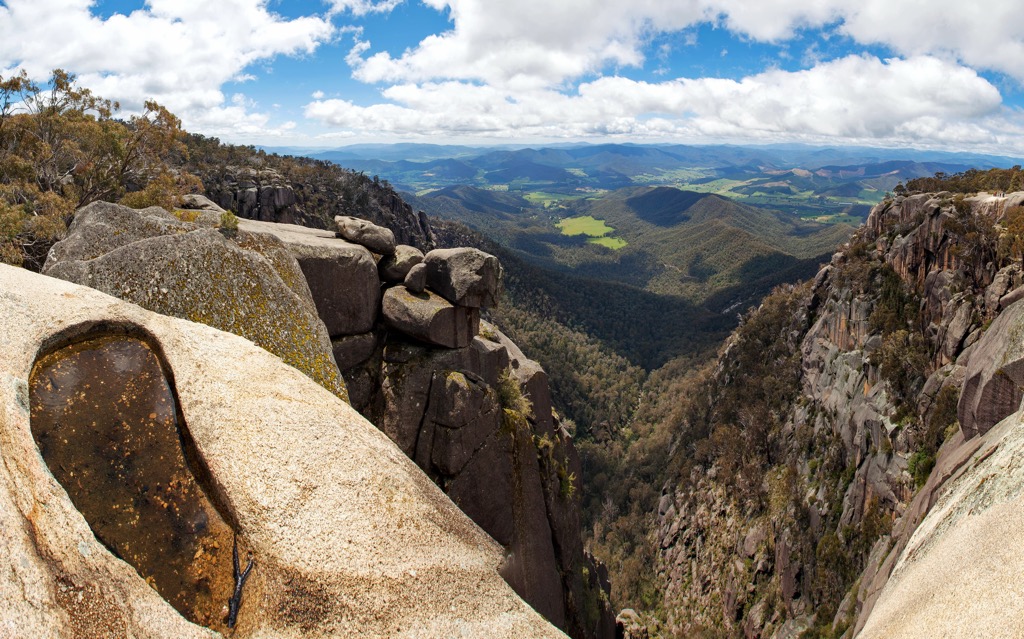
This short walk is one of the best in the national park for grand views. The trail winds its way up to The Cathedral and The Hump (1695 m / 5561 ft), both exposed rocky outcrops on the plateau. It offers a closer look at some of the most impressive granite tors in the park.
The 2 km (1.25 mi) return hike follows a well-formed steep trail first leading to The Cathedral and then turning left to a viewpoint known as The Hump. The incredible vantage point looks towards The Horn (1,723 m / 5,653 ft) across the boulder-strewn plateau.
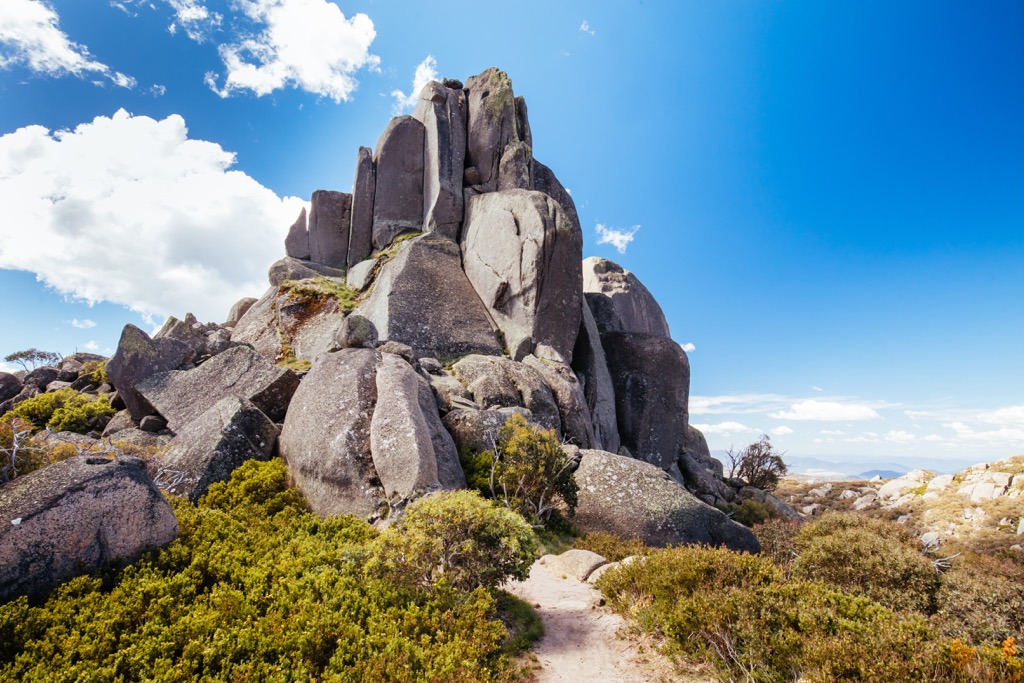
The walk out to Mount McLeod (1,541 m / 5,055 ft) is a popular option for those interested in a longer day hike or even overnight hike. The walk mostly follows the Mount McLeod Walking Track which is a wide management track.
The moderate trail takes you out to one of the most inaccessible parts of the national park, before the final climb up to Mount McLeod summit. At the base of the mountain, there’s also a remote camping area for those wanting to complete it as an overnight hike. You must then return the same way.
Another of the longer walks on the plateau is Mollisons Galleries. This 15 km (9.3 mi) return walk mostly follows the Mollisons Galleries Track from Reservoir Road. It takes you through snow gums, alpine ash forests, and grassy plains, showing a variety of flora.
Along the way you’ll find a couple of optional detours to Og Gog Magog and Eagle Point, two viewpoints from exposed rocky outcrops. Otherwise, you can continue to the end at Mollisons Galleries, where the trail concludes at another rocky outcrop offering views over the Buffalo River Valley.
If you want to make this a loop, there is also the option to take the Rocky Creek Track as the return trail.
As the longest walk in the national park, it is aptly named the Big Walk. The 11 km (6.8 mi) one way or 22 km (13.6 mi) return trail offers an insight into the great diversity of the alpine plateau. Beginning at the base of the mountain, it crosses various terrain zones as it climbs steadily all the way up to Mount Buffalo Chalet.
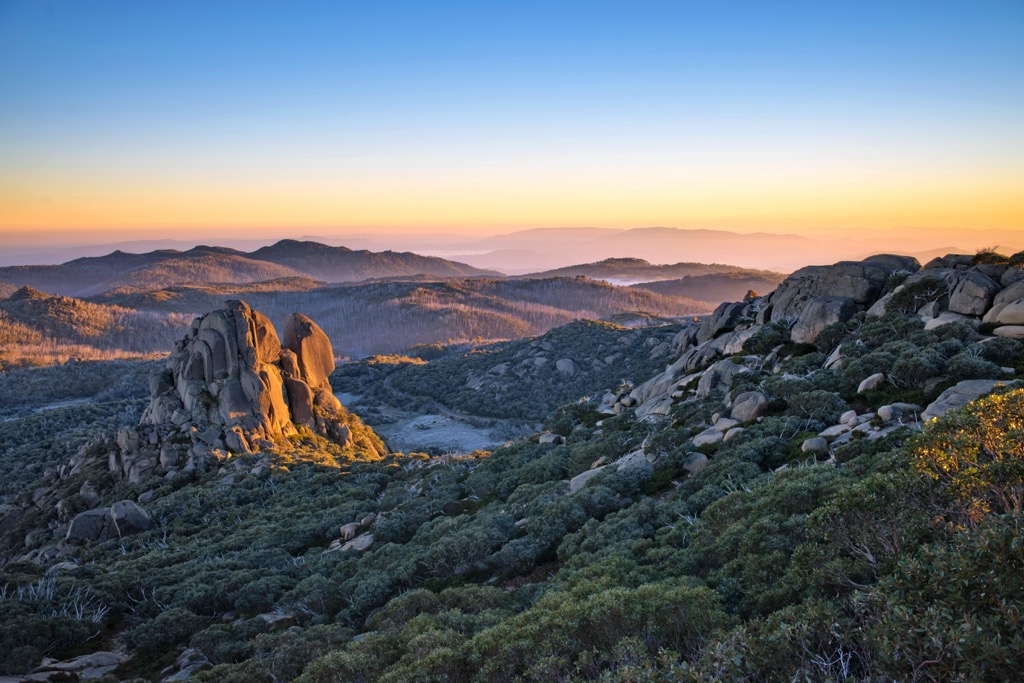
Along the way, there are various lookouts to stop and enjoy the view as you get higher, including Reeds Lookout, Wilkinson’s Lookout, Pulpit Rock, and Crystal Brook Falls. At the top, you can also enjoy the view from Bents Lookout in front of the chalet.
The trail does cross over the sealed road a few times, so beware of traffic. Most people complete the walk one way, however this requires a pickup or car shuffle.
For a less trafficked walking option, the Back Wall offers a different view on the plateau. The 10.5 km (6.5 mi) return walk leaves from near Cresta Valley and heads through snow gums, granite tors and open plains.
The moderate walk ends at the Back Wall, which is a steep cliff on the back side of the plateau below The Horn (1,723 m / 5,653 ft). From there, you’ll have an incredible view across the Australian Alps in the distance.
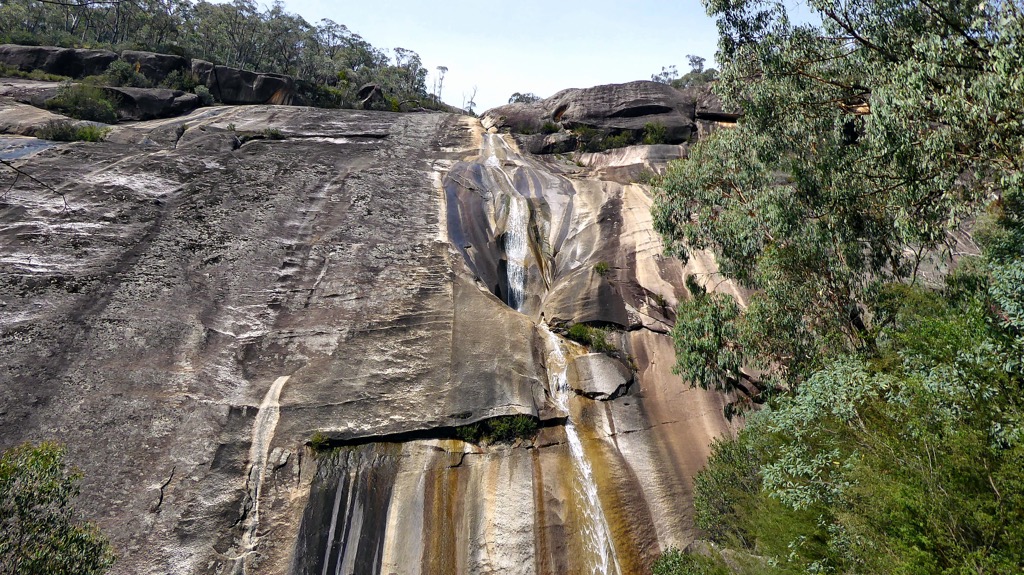
An underrated hike in Mount Buffalo National Park is Rollasons Falls. The 3 km (1.9 mi) return trail leaves from Rollasons Falls Picnic Area. It heads down to the falls on a moderate decline. It then offers both an upper lookout to the left and access to the bottom pool on the right.
It’s the perfect spot to head on a hot day, where you can swim at the base of the waterfall in the deep plunge pool.
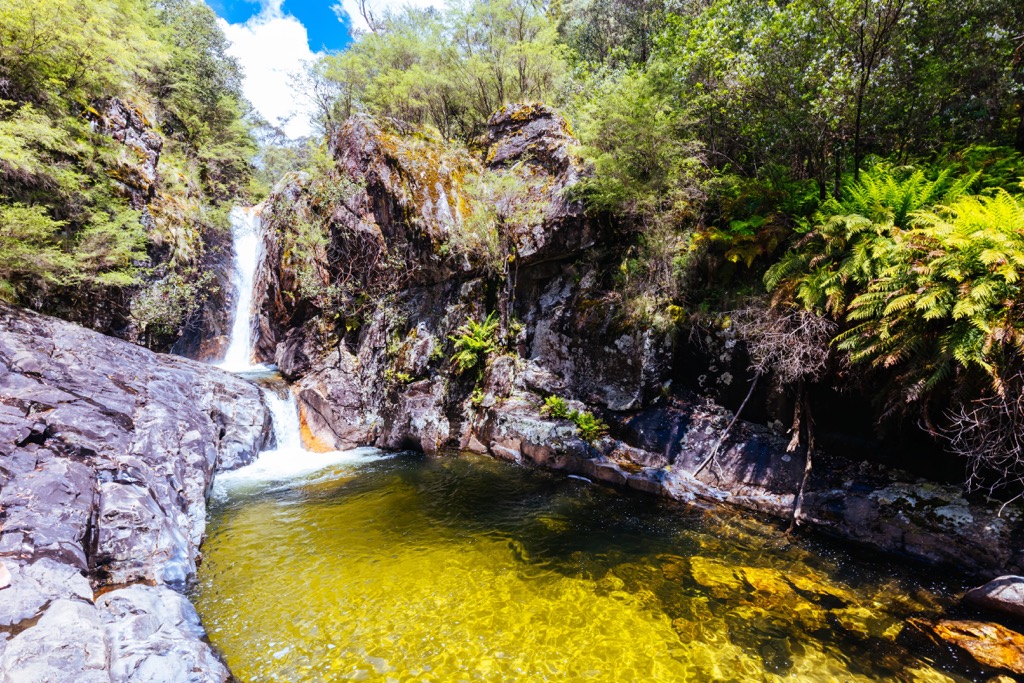
Mount Buffalo National Park is a popular family-friendly winter destination in Victoria. While it’s not home to a large-scale ski resort like the nearby Alpine National Park, the plateau does see significant snowfall from June until September.
The main activities in winter include tobogganing, cross-country skiing, and snowshoeing. There are two main areas for these activities: Dingo Dell and Cresta Valley.
Dingo Dell is a beginner-friendly skiing and tobogganing area, with a cafe and visitor center open during the winter months. Meanwhile, Cresta Valley has cross-country skiing trails and is also great for snowshoe beginners.
Otherwise, Mount McLeod (1,541 m / 5,055 ft) offers a popular overnight snowshoe and snow camping adventure for those wanting to build upon their advanced alpine skills and experience.
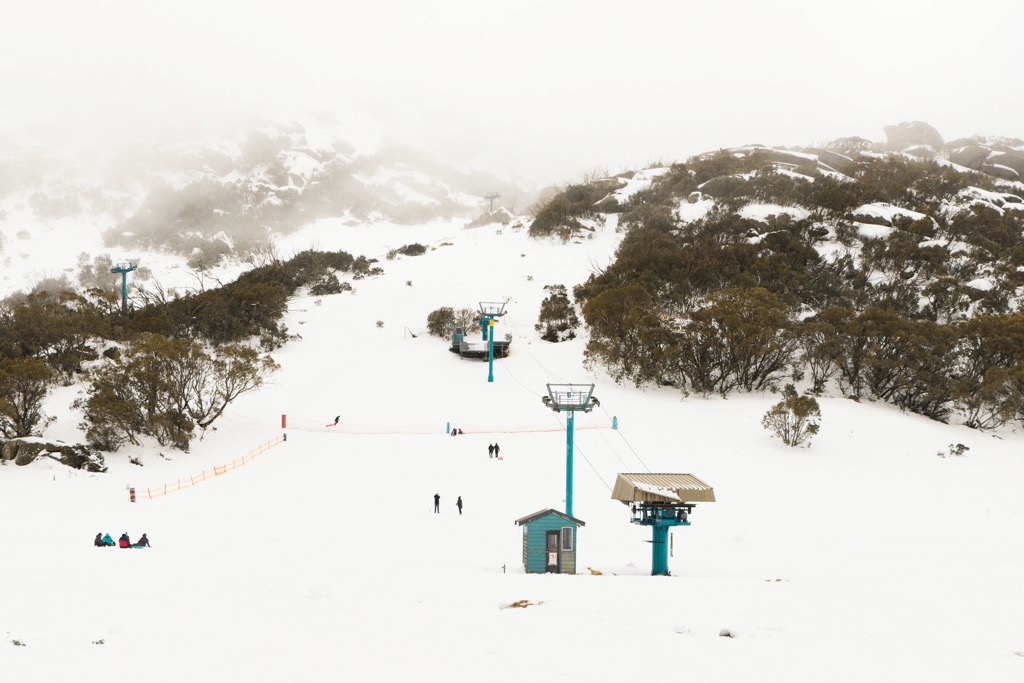
To get the most out of Mount Buffalo National Park, it’s ideal to spend at least the night camping on the plateau. There is only one vehicle-accessible campground in the park, and a couple of remote hike-in campgrounds for walkers. All campgrounds require payment and booking before arrival through the Parks Victoria website.
Located amongst snow gums on the shoreline of Lake Catani, this bush campground offers 49 campsites. Some sites are suitable for small caravans and campervans, while others are best for tents.
The campground is a comfortable place to stay with flushing toilets, hot showers, dishwashing and laundry sinks. However, campers must bring their own drinking water or filter the available water.
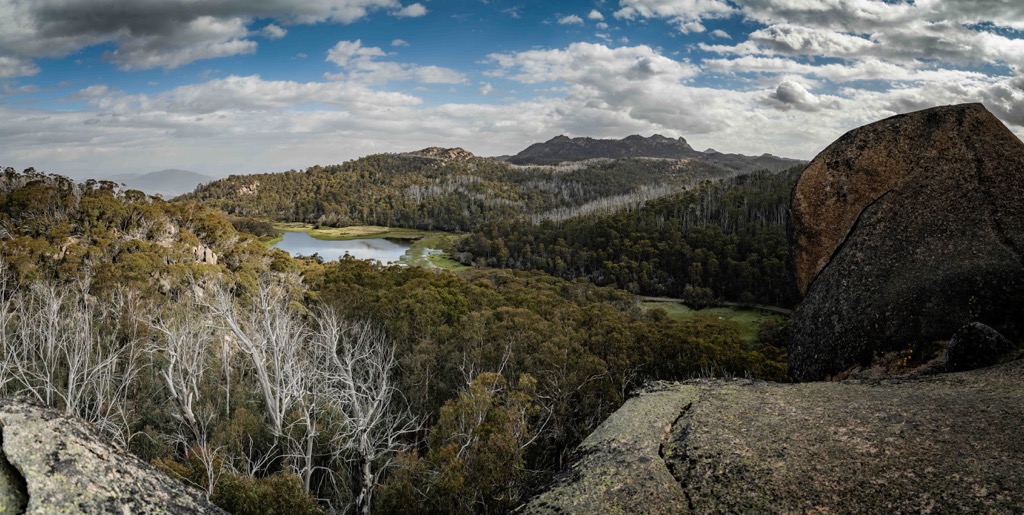
There are two camping areas for hikers on overnight hikes. They’re open all year round, but require snowshoes or skis if utilized in winter.
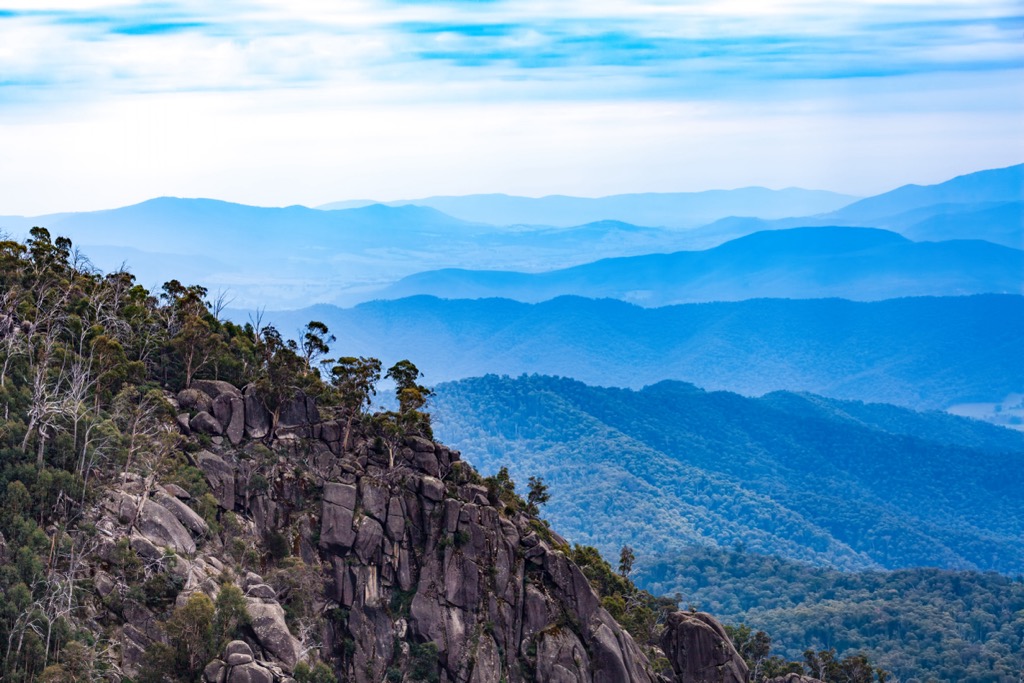
Mount Buffalo National Park is easily accessible from many of Victoria’s regional towns. There are plenty of opportunities to pick up supplies and base yourself in well-serviced towns for a trip to the park.
These are the main towns close to the national park:
Being in the northeast of Victoria, Mount Buffalo National Park is a few hours’ drive from the closest capital city. However, it’s a popular destination for those heading on an extended road trip from Melbourne to Victoria’s High Country.
The closest capital city to Mount Buffalo National Park is Melbourne, which is around 345 kilometers (214 mi) southwest of the park. It’s a relatively straightforward drive along the Hume Highway from the city, with many towns on the way to stop and pick up supplies.
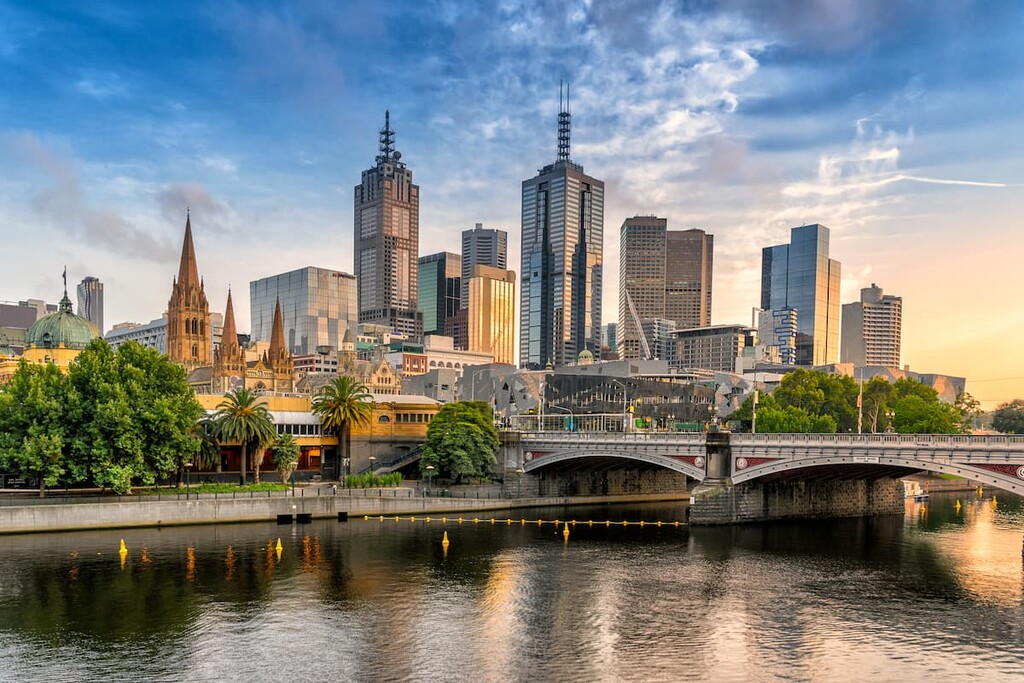
Melbourne is the main transport hub of Victoria. You’ll find the main domestic and international airport there, as well as train and bus stations. This makes it a common spot for people to begin their road trip through Victoria.
The city is well known for its lively nightlife, coffee culture, sports stadiums, and shopping scene. There’s plenty of things to do there, with iconic attractions including the Melbourne Arts Precinct, Federation Square, Bourke Street Mall and Southbank.
Explore Mount Buffalo National Park with the PeakVisor 3D Map and identify its summits.








